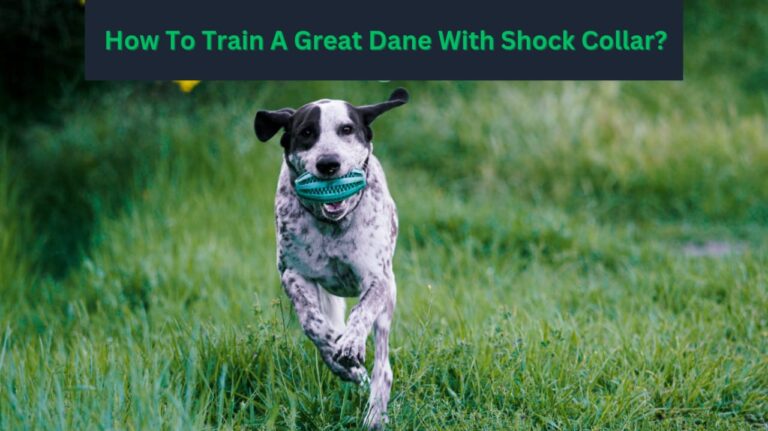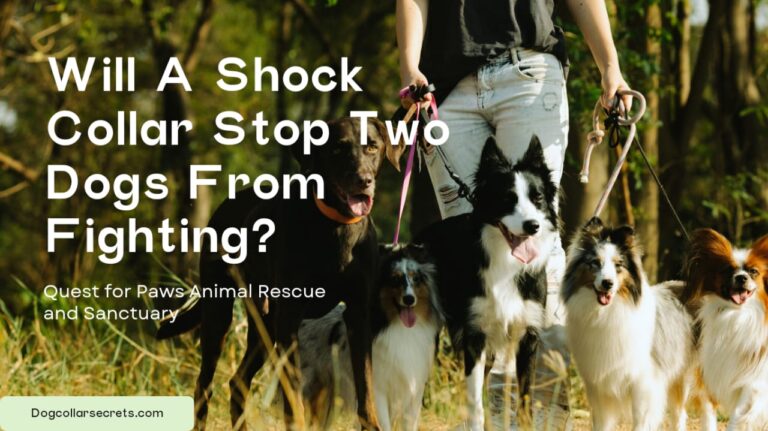Should I walk my dog with a collar or harness?
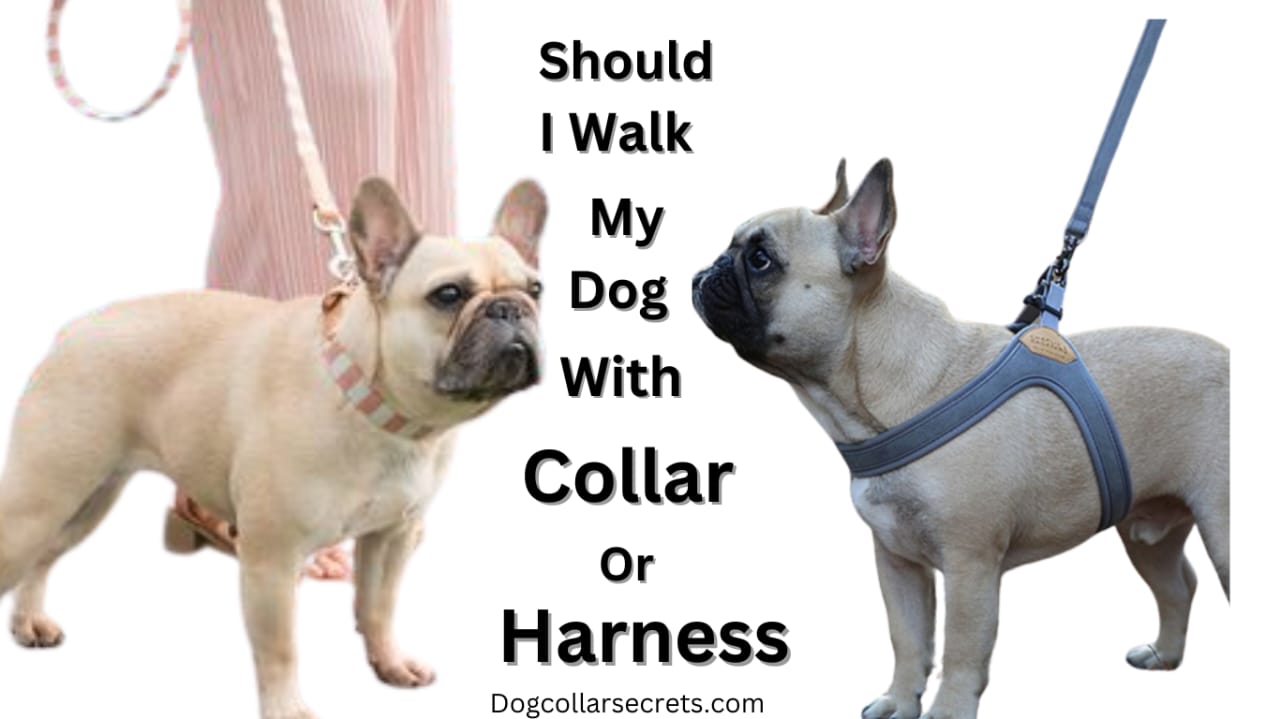
Should I Walk My Dog With a Collar or Harness?
When it comes to taking your furry friend for a stroll, the question arises: should I walk my dog with a collar or harness? It’s a critical decision that can impact your dog’s well-being. Many pet owners grapple with this choice, wondering which option is more suitable for their canine companion. This comprehensive guide will delve into the pros and cons of collars and harnesses to help you make an informed decision that prioritizes your dog’s comfort and safety.
Should I Walk My Dog With a Collar or Harness?
Short Answer: In brief, if you prioritize your dog’s well-being and comfort during walks, a dog harness is the better option compared to a dog collar.
Now, let’s explore the intricacies of the dog collar vs. dog harness debate, examining the health implications, ease of use, training benefits, walking experiences, and the importance of choosing the right fit for your canine companion. Throughout this guide, we’ll emphasize the significance of considering your dog’s unique needs and behaviors to make the most suitable choice between a dog collar and a dog harness.
What Is Safer A Collar or Harness? Let’s Make A Comparison.
Understanding the Health Risks:
Traditional collars, while commonly used, pose certain health risks to dogs, particularly in terms of neck strain. The constant pulling on the collar can lead to discomfort and, in some cases, contribute to long-term issues such as back pain. Dogs that are prone to pulling during walks may experience unnecessary stress on their neck and throats.
Harnesses, on the other hand, offer a safer alternative. By distributing the pressure across the chest and shoulders, a good harness significantly reduces the risk of neck strain. This is especially crucial for dogs with pre-existing health conditions or breeds that are predisposed to neck issues. If your canine companion tends to pull vigorously, a harness could be a game-changer for their well-being.
Collars: Training Challenges
While collars are the go-to choice for many dog owners, they can present challenges during training. Dogs that pull excessively might not respond well to collar training, as the discomfort on their neck could reinforce negative behaviors.
Harnesses: Training Aid
Harnesses can serve as valuable training aids. They provide better control over your dog’s movements without causing discomfort. Additionally, harnesses are often recommended for puppies or newly adopted dogs, making the training process more manageable and positive.
Collars: Limited Control
Collars offer limited control, especially with strong or large dogs. If your dog tends to lunge or pull suddenly, a collar may not provide the necessary restraint.
Harnesses: Improved Control
Harnesses afford dog owners better control. The design allows for steering your dog gently, making walks a more enjoyable experience for both you and your furry friend. If your dog is excitable or tends to chase after every squirrel in sight, a harness can be a game-changer in maintaining a pleasant walking routine.
Collars: Size Matters
When using a collar, ensuring the correct fit is crucial. A collar that is too tight can be uncomfortable, while one that is too loose poses a risk of slipping off. Finding the right size is imperative to prevent any potential harm.
Harnesses: Customized Fit
Harnesses come in various styles and sizes, offering a more customized fit for different breeds. Measure your dog accurately to find a harness that fits snugly but comfortably. A well-fitted harness ensures that your dog is secure without any risk of chafing or discomfort.
Collars: Risk of Injury
For dogs that pull vigorously, collars can pose a risk of injury, especially to the neck and trachea. The sudden force can lead to strains, sprains, or more severe injuries.
Harnesses: Minimizing Pulling Impact
Harnesses are specifically designed to minimize the impact of pulling. The pressure is distributed across the chest and shoulders, preventing any concentrated force on sensitive areas. This is particularly advantageous for dogs that are strong pullers or those in training.
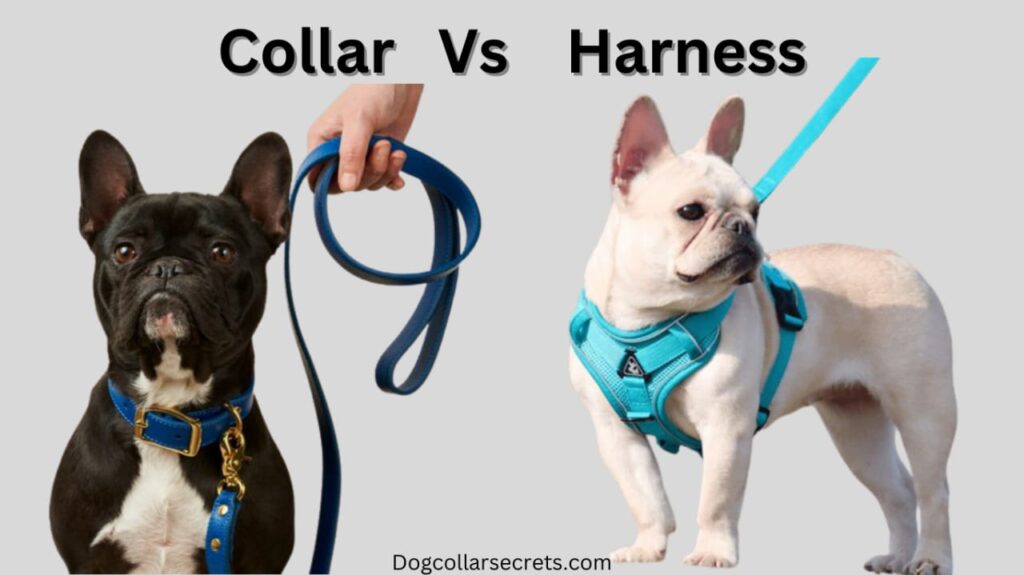
Do Vets Recommend Collars or Harnesses?
Many veterinarians recommend using harnesses over collars for walking dogs, and there are good reasons behind this advice. Collars can sometimes cause strain on a dog’s neck, especially if they pull on the leash. This strain can be uncomfortable for your furry friend and may even lead to health issues over time. Harnesses, on the other hand, are designed to distribute the pressure more evenly across the chest and shoulders, reducing the risk of any potential harm to the neck area.
One primary concern with collars is that they can contribute to respiratory problems in certain breeds or dogs with pre-existing health conditions. When a dog constantly pulls against a collar, it may affect their breathing and exacerbate any respiratory issues they might have. Harnesses, with their design that focuses on the body’s core, alleviate this problem by allowing more controlled and comfortable movement during walks. Vets often recommend harnesses to minimize the risk of respiratory discomfort and ensure a safer walking experience for dogs.
Additionally, veterinarians may suggest harnesses for dogs with certain medical conditions, such as neck or back problems. Harnesses provide better support and reduce the strain on these sensitive areas, promoting a healthier walking routine for dogs with specific health concerns. In summary, many vets lean towards recommending harnesses as a safer and more comfortable option for walking your beloved pets.
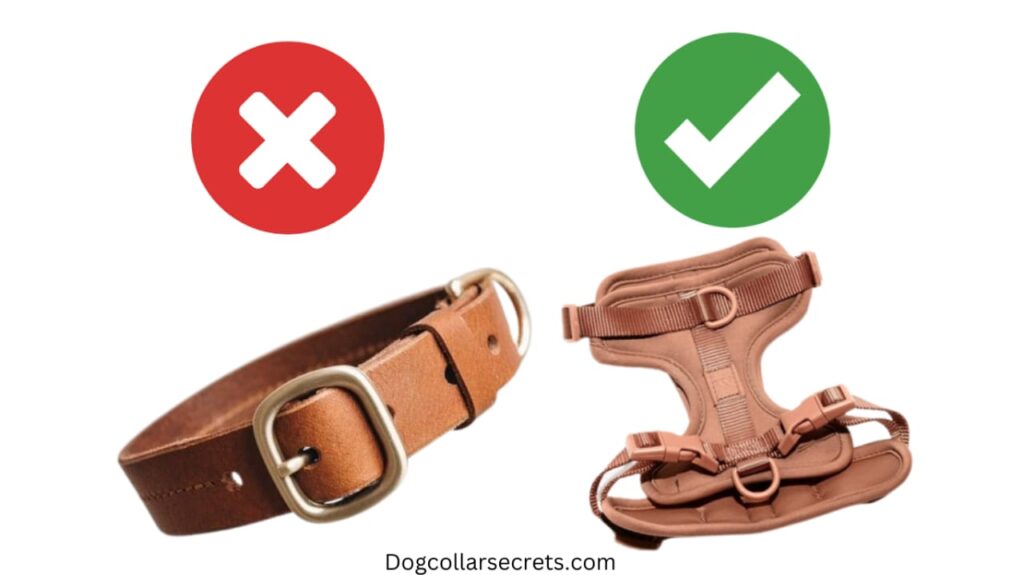
Why Harnesses Are Better Than Collars?
Harnesses are often considered better than collars for several reasons. One key advantage is that harnesses distribute the pressure more evenly across a dog’s body, while collars concentrate it on the neck. When a dog pulls on a leash attached to a collar, it can cause strain on the neck and throat, potentially leading to discomfort or even injury. In contrast, a well-fitted harness avoids putting excessive pressure on sensitive areas, making it a more comfortable option for dogs during walks.
Moreover, harnesses provide better control over your dog’s movements. When walking a dog with a collar, especially a strong or large one, there is limited control, and sudden pulls can be challenging to manage. Harnesses, with their design around the chest and shoulders, offer improved control, allowing pet owners to guide their dogs more effectively. This is particularly beneficial for dogs that are excitable, easily distracted, or still in the training phase.
Another advantage of harnesses is their suitability for dogs with health concerns. Dogs with respiratory issues or breeds prone to neck and throat problems can benefit from harnesses, as they minimize the risk of exacerbating these conditions. In essence, harnesses provide a safer and more dog-friendly option, making walks a positive and enjoyable experience for both the pet and its owner.
Do Dogs Behave Better With A Harness?
Many dog owners find that their pets behave better when using a harness during walks. One reason for this is that harnesses provide better control. With a harness, the pressure is distributed across the chest and shoulders, making it easier for owners to guide their dogs without causing discomfort. This improved control can be especially helpful for dogs that are still in the training phase or tend to get overly excited during walks.
Additionally, harnesses can minimize pulling behavior. Dogs naturally pull against pressure, and collars can exacerbate this tendency, leading to an unpleasant walking experience. A well-fitted harness discourages pulling by distributing the force more evenly, making it a more effective tool for teaching dogs good walking manners. Many pet owners find that their dogs exhibit calmer behavior when using a harness, making walks more enjoyable for both the dog and the owner.
Furthermore, dogs may feel more comfortable and secure in a harness, contributing to better behavior. Some dogs, especially those with anxiety or fear issues, may find collars restrictive or uncomfortable. The design of a harness, which wraps around the body rather than just the neck, can provide a sense of security for the dog. This comfort factor can result in improved behavior, as the dog associates the harness with positive and stress-free experiences during walks.

Harness Vs Collar For Large Dogs
When deciding between a harness and a collar for large dogs, it’s essential to consider a few straightforward factors. Firstly, harnesses are often recommended for larger breeds because they provide better control and distribute the pressure more evenly across the body. This is especially important for strong dogs, as it helps prevent strain on the neck and throat.
Collars, on the other hand, can sometimes be less effective for larger dogs. When a big dog pulls on a leash attached to a collar, it puts more pressure on their neck, which may lead to discomfort or potential health issues over time.
Another consideration is that harnesses offer improved guidance during walks. For larger dogs, having better control is crucial, and a harness makes it easier for owners to manage their movements without causing strain. It’s a comfortable and safe option that many find beneficial for walking larger breeds.
In summary, when it comes to large dogs, harnesses are often the preferred choice for their ability to provide better control, even pressure distribution, and overall comfort during walks.
Conclusion
In conclusion, when pondering the question “Should I walk my dog with a collar or harness?” it’s evident that the choice between the two depends on various factors. Collars, while commonly used, may pose risks, especially for larger dogs, as they concentrate pressure on the neck. On the other hand, harnesses are often recommended for their even pressure distribution and better control, providing a safer and more comfortable walking experience, particularly for strong or excitable dogs.
Considering your dog’s well-being is paramount. Harnesses emerge as a favorable option, minimizing the risk of neck strain and offering a more comfortable walking experience. They prove especially beneficial for large dogs, providing the necessary control without causing discomfort.
Ultimately, the best choice depends on your dog’s needs and behaviors. Observing how your dog responds during walks and considering any health concerns they may have will help you make an informed decision. Prioritizing your dog’s comfort and safety ensures that your daily walks become enjoyable for both you and your furry companion.
You can also read this: Bark Collars: Do Bark Control Collars Work?
Do Vets Recommend Bark Collars? Dog Collar Guide
Dog Collar Size Guide: What’s The Ideal Length For Large Dogs?
Large Dog Collar Size: What Size Collar For A Large Dog?
FAQ
Are harnesses good for dog walking?
Yes, harnesses are generally good for dog walking. They provide even pressure distribution and can be more comfortable for your dog, especially if they tend to pull on the leash.
Is it easier to control a dog with a harness or collar?
It’s often easier to control a dog with a harness. Harnesses offer better control by distributing pressure across the chest and shoulders, making walks more manageable.
Can my dog wear a harness instead of a collar?
Yes, your dog can wear a harness instead of a collar. In fact, many dogs find harnesses more comfortable, and they can be a safer option, especially for dogs that pull during walks.
Are harnesses bad for dogs?
No, harnesses are not inherently bad for dogs. In fact, they are recommended by many veterinarians. However, it’s crucial to choose the right size and fit to ensure your dog’s comfort and safety.
Is it OK to walk a dog with just a collar?
Yes, it’s okay to walk a dog with just a collar, but it may not be the best option for all dogs. Collars can pose risks, especially for dogs that pull vigorously, as they concentrate pressure on the neck and throat. Consider your dog’s behavior and health when deciding between a collar and a harness.
